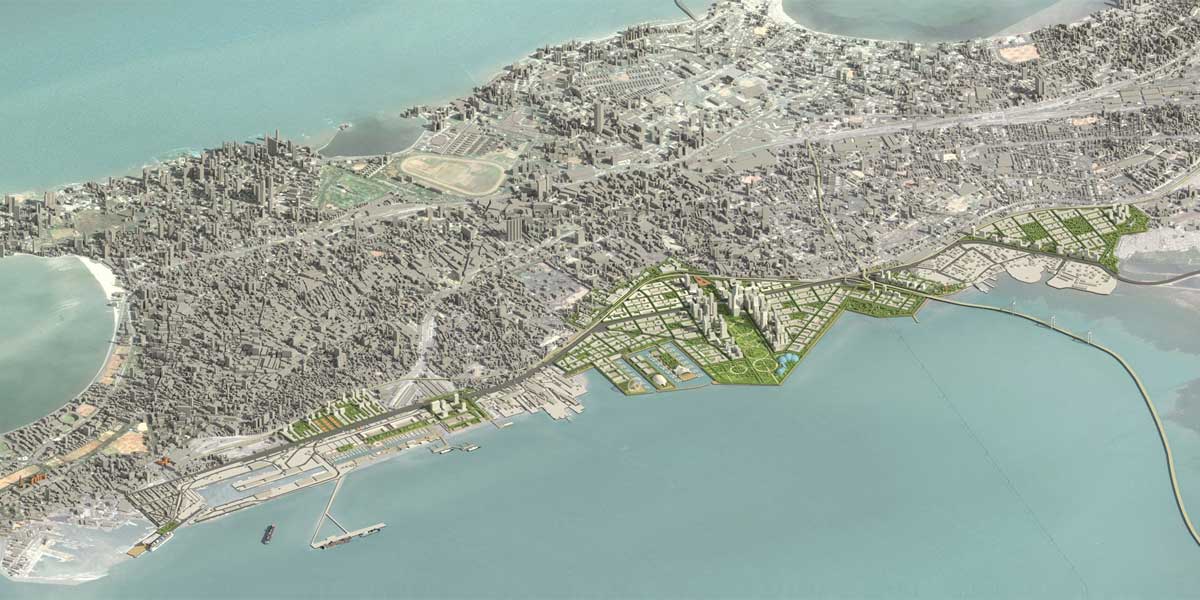

By 2030, Mumbai is expected to become a megalopolis with a population in excess of 30 million and potential economic GDP in excess of $ 250 billion. But this will only be possible if the city is able to attract talent, investment and entrepreneurs. Redeveloping Mumbai’s port land is one of the ways to make Mumbai liveable and enable it to emerge as the hub for innovation and entrepreneurship in India.
APLI Mumbai, a port land initiative, was formed by the late Meera Sanyal and Vice Admiral (Retd) IC Rao, PVSM, AVSM, along with several design groups and thinktanks as a response to the Rani Jadhav Committee Report (on port waterfront and land development in Mumbai), to develop a ‘people’s vision’ for the city and its port lands, shares Sarfaraz Momin, Founding Partner, StudioPOD, Mumbai.
Infrastructure is taking an interesting turn around the world and people are thinking about parks, gardens and landscapes and sustainable development in a very different and systematic way. “Gardens and parks need to be designed such that our cities still survive in case of a sea-level rise,” he says. “Based on this, we group came together to deliberate upon a protective layer all around Mumbai, which would be a 60-km continuous pedestrian and cycling trail. Here, the eastern port land will play a very important role. A publicly accessible waterfront all around the city will also create a buffer or green refuge.”
The reason for this land becoming available is that the Jawaharlal Nehru Port (JNPT) in Navi Mumbai has developed into a major container and bulk cargo port, leading to a decline in traffic in Mumbai Port. Further, the environmental clearance for JNPT included a provision that with the reduction of cargo traffic in Mumbai Port, dock areas not required for cargo operation should be made available for greening and recreation. “The land we are talking about spans 709 hectare; 201 hectare is planned for gardens, roads, open spaces and tourism-related facilities, 66 hectare is planned as a built-up area for commercial exploitation and 93 hectare is proposed additionally for reclamation for the central park,” informs Rao.
“Our idea for the eastern port land is a place where the entire city has access to social hubs,” shares Momin. “On the eastern waterfront, we can embrace water transport owing to the conducive conditions. We propose constructing passenger water transport (PWT) terminals along the entire eastern waterfront. Of these PWT stops, a few should act as major trans-harbour or coastal ferry terminals, providing connectivity to Navi Mumbai, JNPT, Uran, Alibagh, Goa, etc. We are really close to achieving this ’15-minute city’ everyone is talking about. We are suggesting integrated connectivity of all modes of public and non-motorised transport. We are also proposing a light-rail transit/streetcars for last kilometre connectivity.”
Further, Momin says, “We have taken the central neighbourhood of Haji Bunder and created a vision plan to develop a green edge all along the city and then looking at how the stormwater flows, how we can actually capture all of this and then create the park system and develop the entire concrete infrastructure.”
Planner, Construction World Maharashtra, tells us, “The Mumbai Eastern Waterfront is a mass upliftment project that is likely to set a new global benchmark and help improve the living standards of many people.” The project has six objectives:
1. Doubling Mumbai’s GDP while creating 900,000 new jobs
2. Increasing Mumbai’s green cover by 600 per cent in Phase 1
3. Permanently sequestering toxic waste in Mumbai’s creeks on a waste island
4. Improving water quality to levels that restore fish populations
5. Creating affordable housing for 1.2 million people
6. Improving connectivity and reducing traffic in South Mumbai.
Total capital that will be raised by the Eastern Waterfront Redevelopment Corporation (to be set up by the Government of India) is Rs 419,400 crore by monetising government and offshore land. SPVs 1 to 5 will be PPP companies with a 26 per cent government stake. SPV 6 will receive a direct grant of Rs 180,000 crore and some of its projects will be structured as PPPs.
According to Dr Niranjan Hiranandani, MD, Hiranandani Group, the project is an opportunity that should be executed by modifying and improving upon the many good ideas available. “However,” he adds, “we should aim to make something more. For example in the master plan of Mumbai, which is already part of the development plan, the 300-acre garden right from NCPA up to Cuffe Parade is an opportunity to work on.” In his view, while we do not have the price execution capacity required currently, proper leadership and proper economic spotting will help get things together.
- By Praharshi Saxena